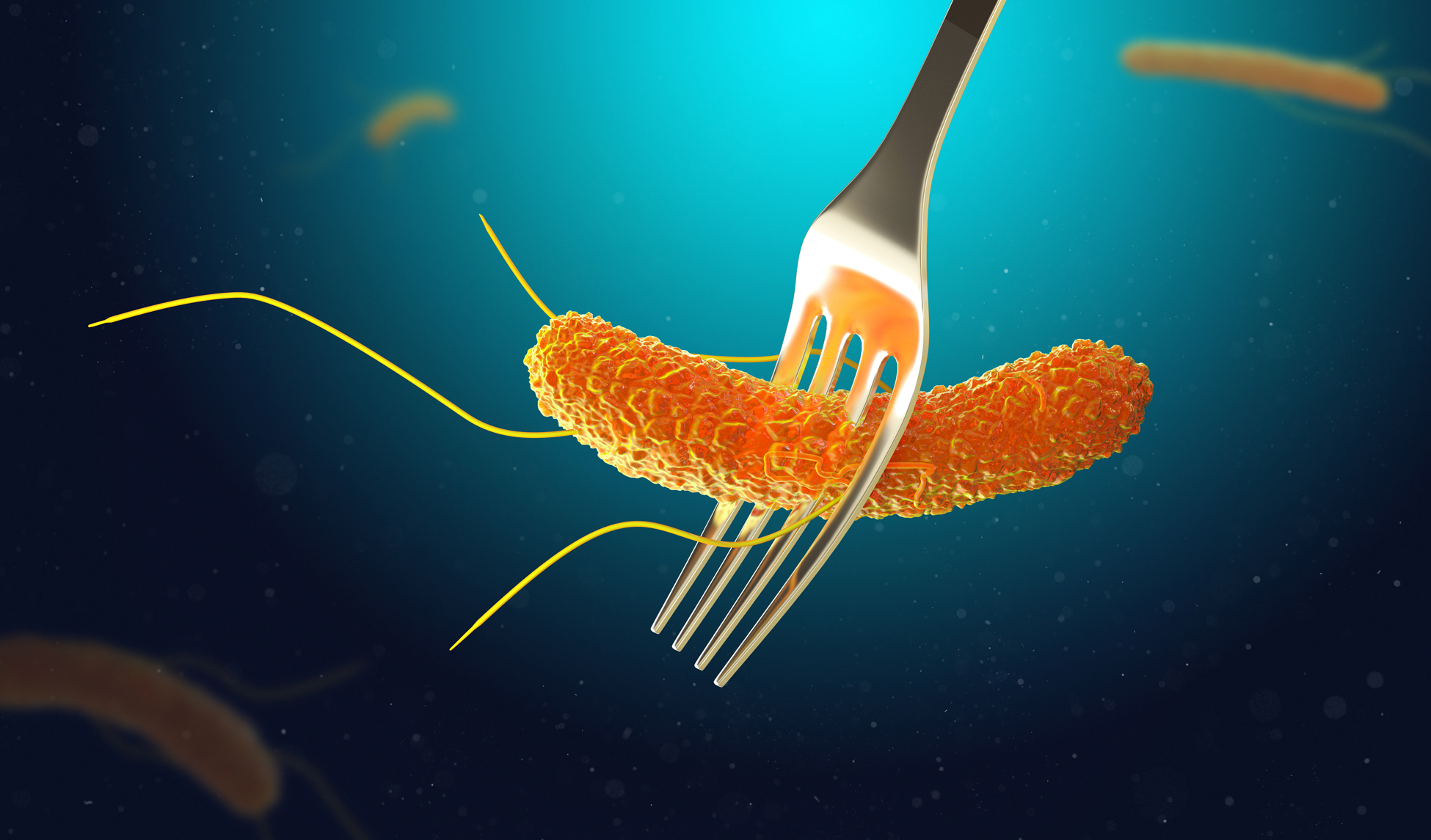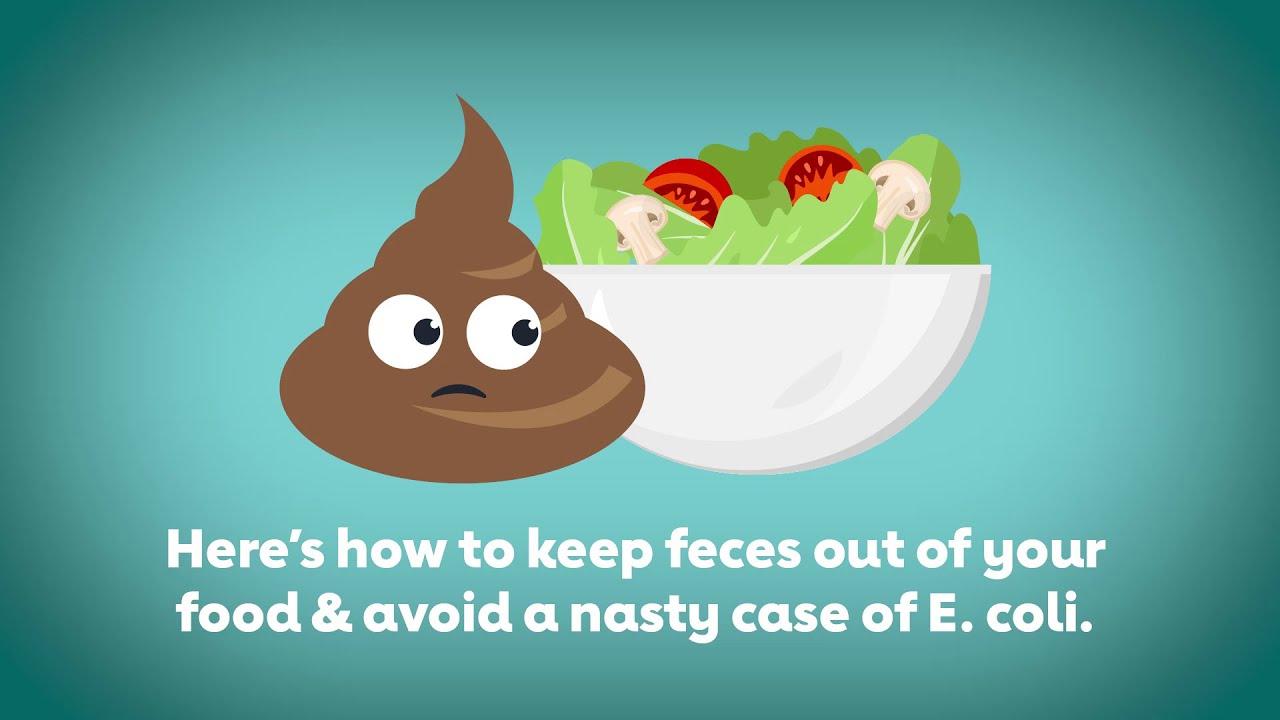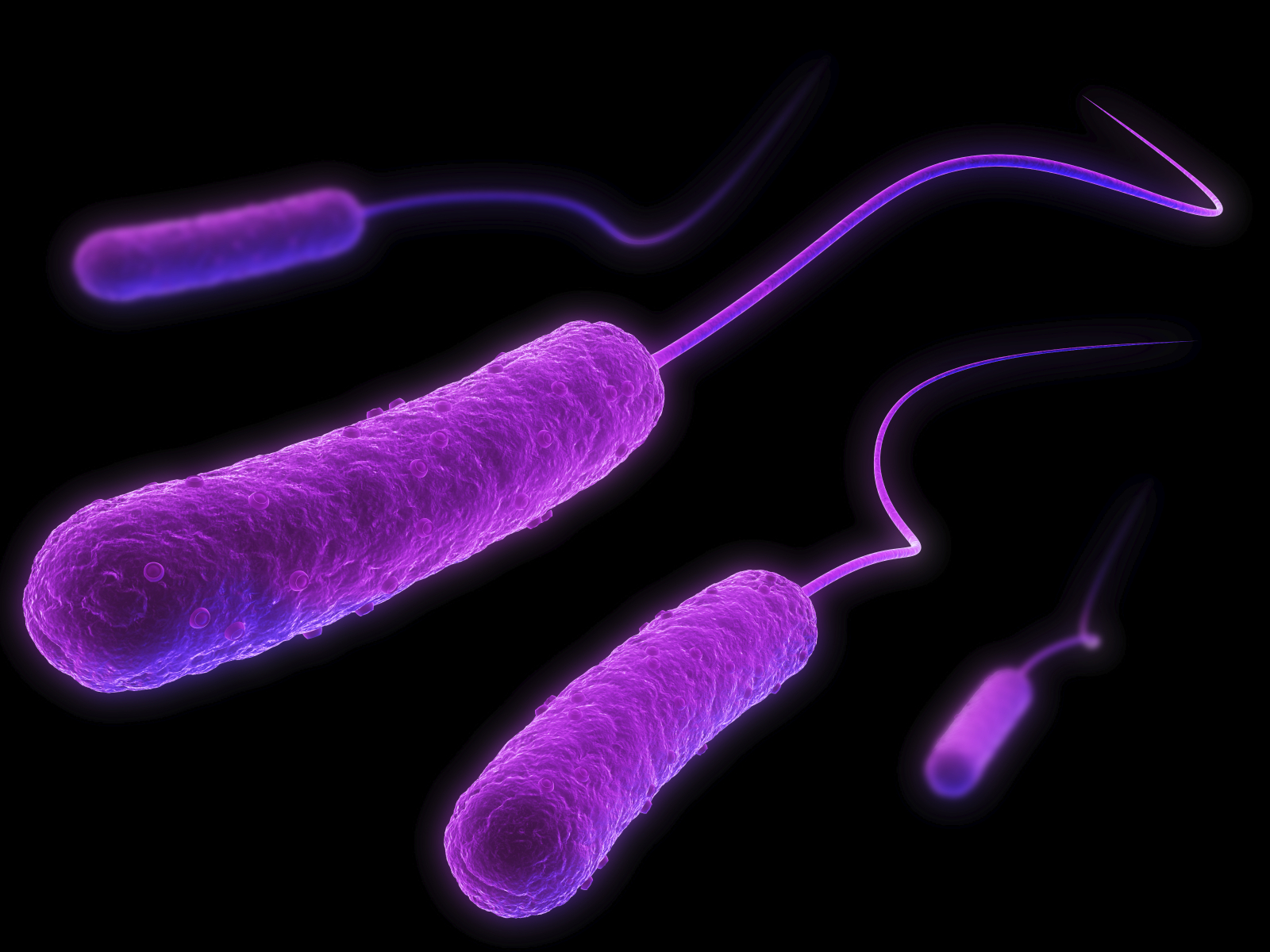Escherichia Coli - Effects And Advances On Recombinant Protein Expression
Escherichia coli is used to make recombinant proteins. The world's most widely utilized cell factories and expression platforms. High-level heterologous protein productions can be achieved using a variety of molecular tools and processes, such as expression plasmids, modified strains, and culturing strategies. Recombinant protein production in microbes has revolutionized biochemistry.
Author:Katharine TateReviewer:Karan EmeryAug 04, 202317.4K Shares238.8K Views

Escherichia coliis used to make recombinant proteins. The world's most widely utilized cell factories and expression platforms.
High-level heterologous protein productions can be achieved using a variety of molecular tools and processes, such as expression plasmids, modified strains, and culturing strategies.
Recombinant protein production in microbes has revolutionized biochemistry.
The days of consuming kilos of animal and plant tissues or enormous quantities of biological fluids to purify small amounts of protein are rapidly approaching an end.
Every researcher looking for a pure protein considers recombinant technologies first.
Mass production of recombinant proteins enables biochemical analysis, industrial usage, and commercialization.
What Is Escherichia Coli?
People and other warm-blooded animals share their intestinal tracts with the diverse collection of bacteria known as Escherichia coli (or simply E. coli). Even though E. coli has a poor notoriety, the vast majority of E. coli strains are completely safe.
Also, according to the Centers for Disease Control and Prevention (CDC), some strains are important to optimal health; E. coli generates vitamin K and vitamin B12, as well as maintaining a protective space in your gut for other beneficial bacteria.
Even still, there's a good basis for the public's mistrust of these microbes: Pathogenic E. coli strains are those that can cause infection and, as a result, diseases such as diarrhea, urinary tract infections, respiratory illnesses, pneumonia, and other serious health problems in humans.
What Are The Different Strains Of Escherichia Coli?
Diarrhea can be caused by six different E. coli strains. These are the strains:
- Diffusely adherent E. coli (DAEC).
- Enteropathogenic E. coli (EPIC).
- Enteroinvasive E. coli (EIEC).
- Enteroaggregative E. coli (EAEC).
- Enterotoxigenic E. coli (ETEC).
- Shiga toxin-producing E. coli (STEC).

The dangers of E. coli
Causes And Risk Factors Of Escherichia Coli Infection
While E. coli O157 is the most well-studied - and typically the most dangerous - of the E. coli infections, other pathogens can also make you sick. According to the CDC, there are six pathogenic E. coli strains associated with gastrointestinal symptoms such as diarrhea and vomiting.
E. coli colonizes the guts of certain animals, including cattle, goats, sheep, deer, and elk, in both non-harmful and pathogenic forms. E. coli can contaminate meat after an animal is slaughtered. According to the US Department of Agriculture, E. coli can move through the animal's system and spread through the animal's feces before slaughter (USDA). the right up arrow
E. coli bacteria can multiply at temperatures as low as 44 degrees F and survive in the refrigerator and freezer. However, bacteria can be killed if the meat is properly and fully cooked. That means an interior temperature of 160 degrees F for ground beef, as tested with a food thermometer.
Food poisoning caused by E. coli can occur when a person consumes:
- People can potentially spread E. coli to you if they have the bacterium on their hands and touch your food, or if you do not wash your E. coli-infected hands before eating.
- Food cross-contamination
- Dairy products and liquids that have not been pasteurized (since pasteurization kills the bacteria)
- Produce or grains tainted by E. coli-contaminated runoff water
- Ground beef that has been contaminated or is undercooked
Symptoms Of An Escherichia Coli Infection
STEC creates a toxin that causes damage to the small intestine lining, resulting in symptoms such as:
- Feeling the need to defecate but being unable to do so
- Fatigue
- Severe stomach cramps
- Dehydration due to diarrhea
- Nausea
- Watery diarrhea, sometimes severe and bloody
Vomiting and a slight temperature of less than 101 degrees F are less common symptoms (38.5 degrees C).
While signs of an E. coli infection can appear as soon as one day after exposure, symptoms usually appear three to four days later. It can take up to ten days after eating or drinking something contaminated with the germs before you get symptoms.
Which Organism To Use For Recombinant Protein Expression?
The process starts with selecting the host cell whose protein synthesis machinery will produce the valuable protein. It specifies the molecular tools, equipment, and reagents for the project. Microorganism hosts include bacteria, yeast, filamentous fungus, and unicellular algae.
Their choice is determined by the protein of interest. Eukaryotic post-translational modifications may require more than prokaryotic expression systems (like glycosylation). E. coli is a well-known host organism.
Which Plasmid Should Be Chosen?
Replicons, promoters, selection markers, many cloning sites, and fusion protein/fusion protein removal procedures are all used in common expression plasmids. It's easy to become lost in the vast collection of expression vectors available. Examine these attributes in light of your needs to make an informed decision.
Replicon
Replicons are found in self-replicating genetic components such as plasmids. It has a single replication origin as well as cis-acting control elements. The copy number of a vector is an important vector parameter. Copy number is controlled by Replicon.
Because the cell has more expression units, a higher plasmid dosage results in a higher recombinant protein yield. A large number of plasmids can limit bacterial growth and create plasmid instability, lowering the number of healthy organisms available for protein synthesis. Plasmids with a high copy number do not increase protein synthesis yields.
Promoter
The lac promoter is a gold standard in the field of bacterial promoter research. Expression vectors were enabled by the system's accumulated expertise. Lactose stimulates the system and is used in the production of protein.
When carbon sources are quickly digested, induction is difficult (such as glucose present in rich media). Lac promoter expression is not fully triggered in the presence of lactose and glucose until all of the glucose is consumed. Low glucose levels cause the production of cyclic adenosine monophosphate (cAMP), which activates the lac operon.
Catabolite suppression has a favorable effect on expression. Low cAMP levels in lac operon-repressing sugars have been linked to decreased lac operon expression.

Food safety: Avoiding E. coli
Selection Marker
Plasmid-free cell growth is prevented by including a resistance identifier in the plasmid backbone. Antibiotic-resistant genes are used by E. coli to do this. The bla gene encodes a periplasmic enzyme that deactivates the β-lactam ring of ampicillin.
Because β-lactamase is continuously secreted, ampicillin is rapidly destroyed and depleted. Cells without the plasmid can multiply during culture. Selective medicines with degradation-based resistance, like chloramphenicol and kanamycin, may potentially be affected by this issue. Tetracycline is relatively durable throughout cultivation because resistant cells aggressively efflux the drug.
Affinity Tags
When developing a project that calls for a pure soluble active recombinant protein, it's critical to I detect it throughout the expression and purification process, (ii) achieve maximal solubility, and (iii) efficiently purify it from E. coli. These three goals may be easily fulfilled by expressing a stretch of amino acids (peptide tag) or a large polypeptide (fusion partner) with the needed protein.
Tag Removal
The fusion partner must be deleted if structural or biochemical research is required. Peptide tags can disrupt protein activity and structure, but they can be left in place for crystallographic studies. Tags are removed by enzymatic or chemical cleavage.
Which Is The Appropriate Host?
A quick search for an appropriate E. coli strain as a host reveals dozens of options. Each has advantages and disadvantages. Many are specialized strains used for specific applications. An first expression screen requires only BL21(DE3) and K-12 derivatives.
Which Is The Combination For Success?
It is obvious that there are numerous options for developing an expression system. Many factors must be considered in order to obtain the appropriate protein. If the project calls for expressing two protein constructs in six different vectors, each transformed in three strains, 36 expression attempts are required.
Other factors could raise this figure. This time-consuming trial-and-error pilot inquiry can be sped up with micro-expression trials. Small-scale screening is done in 2-ml tubes or 96-well plates. A single individual may analyze over 1000 culture conditions in a week using high throughput technologies that use liquid handling robots.
Troubleshooting Recombinant Protein Production
This article discusses how to improve recombinant protein production in E. coli. Even with careful plasmid and host selection, it is impossible to predict whether the protein will be abundant and in a soluble active form. This purpose is frequently thwarted by a variety of circumstances. The paragraphs that follow provide remedies to each scenario.
No Or Low Production
This is the worst worst-case situation. When a protein of interest cannot be discovered using a sensitive method (e.g., Western blot) or is detected at extremely low levels (less than micrograms per liter of culture), it frequently has a negative effect on the cell.
Protein Toxicity
Protein toxicity happens when a recombinant protein performs an unnecessary and damaging function in the host cell. This function disrupts the microorganism's normal proliferation and homeostasis, resulting in slower growth, decreased cell density, and death.
Check cell development before induction. Gene toxicity and basal generation of harmful mRNA/protein may be to blame if a recombinant strain develops slower than an empty-vector strain.
Codon Bias
When synonymous codons appear more frequently in foreign DNA than in the host, this is referred to as codon bias. Low-abundance tRNAs are depleted during full recombinant protein production. This flaw may result in amino acid misincorporation and/or polypeptide truncation, compromising heterologous protein synthesis and/or activity.
Limiting Factors In Batch Cultivation
When the described techniques fail to improve recombinant protein expression, culture density might be increased to boost volumetric protein synthesis. This can be produced by changing the composition of the medium and vigorously shaking it.
In LB, E. coli is cultured. It's simple to grow, nutrient-dense, and ideal for early log phase growth. All of these characteristics make it appropriate for protein production but not for high-density cultures. Despite the richness of the soup, cell growth is weak. LB is low in carbohydrates and divalent cations.
Inclusion Bodies Formation
Foreign genes in E. coli lose control over their spatiotemporal expression. The freshly synthesized recombinant polypeptide is expressed in E. coli, where the pH, osmolarity, redox potential, cofactors, and folding processes may differ from those found in the original source.
Hydrophobic polypeptide stretches are abundant and ready for interaction at high level expression. Proteins become unstable and clump together as a result of this. Protein clumps are what IBs are. When protein aggregation and solubilization are out of equilibrium, IBs form. By minimizing IB formation, soluble recombinant proteins can be created.
One method involves fusing the protein with a solubility enhancer. The section "Affinity Tags" provided examples. If the protein can be refolded in vitro, IB can be useful. If this is the case, circumstances can be changed to stimulate IB formation, providing a simple method for one-step protein purification.
Disulfide Bond Formation
Correct disulfide bond formation is critical for the physiologically active three-dimensional structure of many recombinant proteins. Protein misfolding and IB can be caused by incorrect disulfide bonds.
Cysteine oxidation takes place in the periplasm of E. coli, where enzymes from the Dsb family catalyze disulfide exchange activities. Disulfide bond formation in the cytoplasm is uncommon, presumably due to cysteine residues serving as enzyme catalytic sites.
Disulfide bond formation can cause protein inactivation, misfolding, and aggregation. The thioredoxin-thioredoxin reductase (trxB) and glutaredoxin-glutarexin reductase (gor) systems keep the cytoplasm's negative redox potential and reducing environment stable.
This has an impact on the production of disulfide-bonded recombinant proteins. One way, as indicated in "Protein Toxicity," is to target the periplasm.
Chaperone Co-Expression And Cofactor Supplementation
Molecular chaperones aid in the formation of nascent polypeptides. ClpB has the ability to breakdown unfolded IB polypeptides. The cytosol is overburdened by high quantities of recombinant protein production, which can overwhelm quality control mechanisms.
Remove the inducer after centrifugation and replace it with chloramphenicol-supplemented fresh media to stop protein expression. This allows molecular chaperones to assist in the folding of recombinant polypeptides.
Slowing Down Production Rate
Slower protein production allows recombinant proteins to fold correctly. When we looked at translational pauses at rare codons and recombinant protein production, we covered this. Protein folding is improved by lowering protein concentration.
The most common approach for slowing protein production is to raise the incubation temperature. At higher temperatures, temperature-dependent hydrophobic interactions promote aggregation.
Protein Inactivity
It is not enough to have soluble protein; the protein may still be weak, meaning it lacks function. The protein adopts a stable soluble form due to incomplete folding, but the active site design is poor.
Some proteins fold using small molecules or prosthetic groups, as discussed above. Including these compounds in the growth medium boosts protein output and quality. Proteins can be inactivated if disulfide bonds are formed incorrectly.
Low-temperature protein production has an impact on quality. A lab discovered that lowering the culture temperature increases the structural integrity and functionality of recombinant proteins.
This occurred when the intracellular DnaK concentration was high, and this event calls the quality of solubility into question. On this basis, it may be prudent to express all recombinant proteins at low temperatures or to compare their specific functions.
People Also Ask
How Does Escherichia Coli Get Into The Vagina?
E. coli bacteria live in the rectum and can infect the vagina if they spread. Infections are more likely in the following conditions: General ill health, hot weather, non-ventilating clothing, particularly underwear, or any other situation that enhances genital dampness, temperature, and obscurity are all causes.
What Kills Escherichia Coli In Bladder Naturally?
One of the most well-known natural cures for urinary tract infections is to drink unsweetened cranberry juice. If drinking unsweetened cranberry juice isn't for you, it's also available in pill form. Cranberries work to prevent infection by preventing bacteria from attaching to the urinary tract.
How Do You Get Rid Of Escherichia Coli In The Urinary Tract?
Antibiotics are the first-line treatment for urinary tract infections (UTIs), but some strains of E. coli, known as extended-spectrum beta-lactamase (ESBL) E. coli, have developed resistant to several of these medications, including ampicillin and tetracycline.
What Does It Mean When You Have Escherichia Coli In Your Urine?
Infection of the bladder (cystitis)
This type of UTI is typically caused by Escherichia coli (E. coli), a type of bacteria prevalent in the GI tract. Other bacteria, on the other hand, are sometimes to blame. Cystitis can be caused by sexual activity, but you don't have to be sexually active to get it.
Concluding
Escherichia coli is the ideal cell factory for recombinant expression. E. coli can express prokaryotic and eukaryotic globular proteins. Several papers have achieved success expressing membrane proteins and proteins above 60 kDa.
Less than 50% of bacterial proteins and less than 15% of non-bacterial proteins can be expressed in E. coli in a soluble form, demonstrating the system's flexibility. Things can get problematic when expressing a challenging protein.
We hope to have provided a comprehensive list of E. coli protein expression solutions, but be careful. Many of the tactics outlined here will fail. This is because tactics for debugging recombinant protein expression are sometimes protein-specific and suffer from positive bias; i.e., only successful strategies are publicized.
Jump to
What Is Escherichia Coli?
What Are The Different Strains Of Escherichia Coli?
Causes And Risk Factors Of Escherichia Coli Infection
Symptoms Of An Escherichia Coli Infection
Which Organism To Use For Recombinant Protein Expression?
Which Plasmid Should Be Chosen?
Which Is The Appropriate Host?
Which Is The Combination For Success?
Troubleshooting Recombinant Protein Production
Protein Inactivity
People Also Ask
Concluding

Katharine Tate
Author

Karan Emery
Reviewer
Latest Articles
Popular Articles
